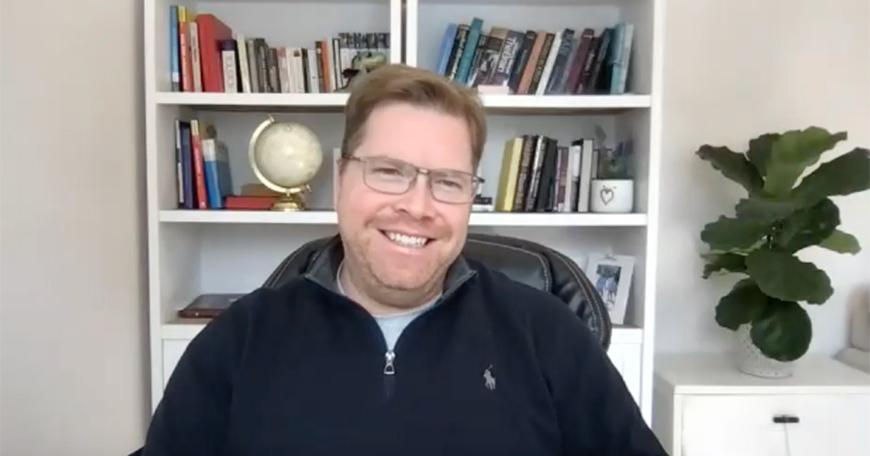
I feel like I learned, but did I?
A student reflects on the feeling versus the reality of learning
You found it. The class that sparks your interest, makes you go “wow”, inspires you to sit and study for hours. Only to find out all too quickly that you’re not good at it. In fact, you’re struggling a lot.
Alas, this has been my relationship with physics classes at MIT. My professors and lectures have always been encouraging and engaging - deriving equations from the fundamentals and showcasing demos for real-world context. Yet there still seems to be a mental barrier or a conceptual void in learning physics for me. Consequently, the matter of physics education is near to my heart and a pressing concern - shouldn’t every person, regardless of STEM background or interest, learn how to comprehend their physical world without struggling to the point of defeatism?
A few weeks ago, on October 5th, Dr. Louis Deslauriers, one of the Directors of Science Teaching and Learning at Harvard, gave an xTalk sharing his research findings regarding physics education. Specifically, Deslauriers emphasized the effectiveness of active learning in lectures and homework using deliberate practice. Indeed, active learning has been promoted as the desired norm in education. According to a survey published in 2018, 50% of courses have some elements of active learning in them but only 10%-15% are deemed fully student-centered.
What I found most interesting from the talk was the anti-correlation of active learning and feeling-of-learning. Feeling-of-learning (FOL) simply entails asking students how much they think they learned. Oftentimes, well-delivered lectures make students feel like they learned a lot, while more interactive group activities can leave students feeling tired - especially if people in the group don’t participate. At one point or another, we’ve probably all had the thought - “Please don’t make me talk with other students. I just want to sit and listen.” Of course, active learning involves increased cognitive effort. Deslauriers notes, “It’s like working out your muscles - it’s not always comfortable.” While superstar lecturers may receive shining evaluations from students, how much the student actually learns is not necessarily related to how informative or compelling the lecture may be.
In a study published in 2011, Deslauriers along with colleagues Ellen Schelew and Carl Wieman, divided a class into two groups, where one group learned the material via traditional lectures and the other group learned the material via more modern principles of effective teaching. Both groups received the exact same learning objectives, same class time, and same exam. Scores from the traditional lecture group averaged around 41% while active learning scores averaged around 74%. Consequently, understanding the relationship of FOL with actual learning is a key factor of consideration.
To further investigate the anti-correlation of FOL and actual learning, Deslauriers carried out a study on two groups of students to compare passive and active learning. Both groups worked on the same handouts. The passive learning model involved a 10 min long instructor explanation and feedback, where the instructor went through the material slowly and deliberately, giving all the necessary information to the students. The active learning model consisted of 5 minutes of working on the handout in groups and then 5 minutes of instructor feedback. In this study, students in the passive learning model reported - “I feel like I learned a great deal from this lecture” and “the instructor was effective at teaching.” Consequently, the data-backed benefits of active learning don’t seem to match up with the benefits perceived by students.
What can instructors do? Deslauriers offered some thoughtful points: Intervene early on. Reiterate the value of cognitive effort and remind students about the potential clash of FOL and actual learning. Assess early on. I think that even just informing more students about the anti-correlation of FOL and actual learning is a promising first step.
Deslauriers also provided a practical handle on reconfiguring physics homework for non-physics majors. He emphasized homework enriched with sub-skills practice - smaller fundamental calculations or concepts that serve as stepping stones in more complex problems. Indeed, such homework is more effortful, and by nature, longer in terms of the number of problems to be completed. However, several students reported the organizational benefits of such sub-skill practice - “I find it useful even when I already know how to do the short problems [subskills]. It helps me put it all into place in my head.” This is exactly where teachers want their students to get to - synthesizing information in a logical applicable structure.
As a teaching assistant and a student, I gained so many fresh perspectives from this talk!
Even though I wholeheartedly wish to help my students as much as possible, I shouldn’t tell them everything right away. Active learning emphasizes trying things first on your own and with other students. Yet at the same time, I can effectively help my students by giving them more practice for strengthening basic sub-skills. This ties into my experience as a student as well. A more efficient way to master material is not doing the same problems over and over again, but identifying what are the crucial sub-skills needed to solve any problem thrown your way. Maybe that’s why those physics exams often seem ten times harder than the practice ones - I’ve learned how to do a specific problem rather than focusing on the skills behind each step.
Overall, I’m greatly encouraged to adjust how I approach my own learning and also get more involved in making physics education more effective and accessible.
 Sophia Fang '22 is an MIT senior, majoring in Materials Science and Engineering
Sophia Fang '22 is an MIT senior, majoring in Materials Science and Engineering

